Text
✨History✨
18 camels and 300 elephants to take all the loot from just one plundering. 👍🏻
And they say that these people were nation builders. 🤡✨💡🫡
61 notes
·
View notes
Photo

Detail of Goodess sculpture, Chola bronze from Tamil Nadu
4K notes
·
View notes
Text
Bappa Rawal : Conqueror of Arabia, Pioneering Hindu Resistance and Uniting Bharatvarsha.

Originally named Kalabhoja at birth, later named Bappa or “Father” by the people of Mewar as a form of endearment and how they looked up to him. Mother by Kamlavati and fathered by Nagadit, Rawal was born as a direct descendant of Gulhilote Dynasty. Gulhilote Dynasty is a Suryavanshi Dynasty that traces its linear to Luv, son of Shree Ram and Goddess Sita. It later went on to become the mighty Sisodiya dynasty that ruled Mewar for an uninterrupted 1,400 years and adorns the royal line and throne of Udaipur even today.
Bappa Rawal had a tormented and deprived childhood. He was taken by his mother to the safety of the jungles of Bhinder in Mewar, where he was protected by the Bhils of Yadu descent. The Bhil king, Mandalik protected Bappa during his childhood. This was the beginning of the Bhils’ association with the royal lineage of Mewar - an association that still continues to this day.
Bappa is said to have met a Shaiva mystic, Harit sadhu, who revealed to him the mysteries of the Shaiva Tantra, principles of morality and lessons in warfare along with a plan to lead Hindu resistance to Islam by winning back Chittor and re-establishing Rajput control over Mewar.
Being with the mystic sadhu, Bappa developed a deep devotion to Bhagwan Eklingji, an avatar of Shiva and the presiding deity of the Mewar royal house till date. Bappa had vision of Goddess Bhawani, who blessed him and instructed him to serve the Mori dynasty of Chittor, which became the most powerful centre of sovereign India at the time.
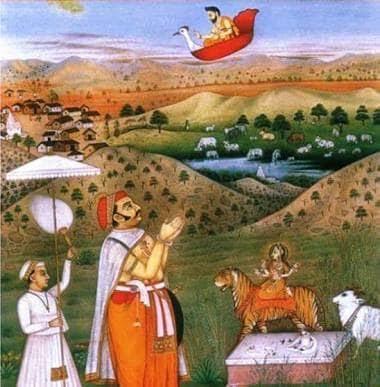
Bappa was received well at Chittor by the Mori king, Manmori, the then ruler of Chittor. Bappa was designated as a samant and granted a suitable estate. It was at this time that Arab for the first time, crossed the Indus through Sindh and entered Bharat.
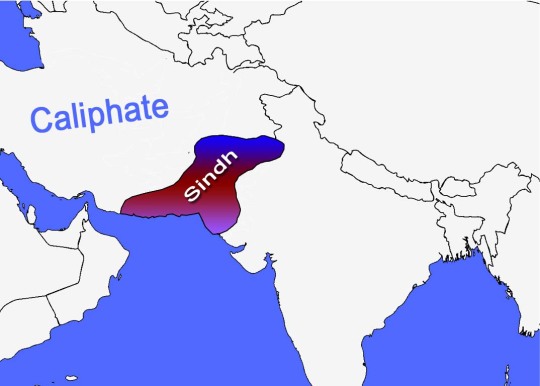
In 712 CE, Mohammad Bin Qasim of Arabia attacked Raja Dahir Sen of Sindh. Raja Dahir also sent a letter to Muhammad bin Kasim, warning him that capturing Debal, an insignificant city of traders and artisans was no great feat, as
“it contained neither a strong fortress, nor was it occupied by a garrison of any importance with whom it was worth your while to fight. If there had been a single note-worthy warrior in it, there would not have been left a rack of you behind.”
[The Chachnama: Volume 1 (1900), P 83 — Translated from Persian by Mirza Kalichbeg Fredunbeg]
He further warned Muhammad bin Kasim that he and his army would stand no chance when faced with a warrior of the calibre of Jaisiah or the king of Kashmir, and that he would meet the same fate as Budail if he did not get rid of his vain ideas of conquering Sindh.
Rattled by Raja Dahir’s letter, Muhammad bin Kasim wrote a contemptuous letter in response, waving aside Raja Dahir’s warning and claiming that,
“I consider it my bounden duty to carry on this religious war, in obedience to the orders of Allah who says in the Koran: ‘wage war against the infidels and dissemblers’; and I have undertaken this task simply to secure divine pleasure.”
[The Chachnama: Volume 1 (1900), P 85 — Translated from Persian by Mirza Kalichbeg Fredunbeg]
Just like the earlier ‘pious’ Caliphs and Al Hajjaj, Muhammad bin Kasim was also driven by the singular idea of waging religious war or jihad on the infidels of Hind and Sind and conquering them for Islam, in keeping with the central doctrine of Islam. Several attempts were repulsed by King Dahir but as it goes on, someone from the inside sold them out. At Nerun, the Buddhist town’s head Bhandarkar Samani betrayed their king dahir not only aiding the Arab army to cross Sindh river but also giving entry to King Dahir’s garrison resulting in the defeat at Battle of Aror.
Qasim, armed with the loot of the riches of Sindh, was able to raise an army of mercenaries and moved eastwards to attack Mewar. Tod writes that the slain Raja Dahir’s son escaped to Chittor and informed Bappa about the fall of Sindh and how women were being abducted as sex slaves.
“Inspite of all these military preparations, it is extremely doubtful if Sindh could have been conquered by Mohammad bin Kasim in 712 A.D., had all the people and Chiefs remained true to their king.”
[Indian Resistance To Early Muslim Invaders Upto 1206 A.D., P 23 — Dr. Ram Gopal Mishra]
Much before Muhammad bin Kasim raided Debal and the frightened resident betrayed his own people and aided Muhammad, the Buddhist religious head of Nerun, Bhandarkan Samani had quietly sought the mercy of Hajjaj and acquiesced to pay tribute. Samani had been afraid of the Arab backlash upon the killing of Budail in battle at Debal, and had secretly sent a messenger to Al Hajjaj, asking for pardon and promising to pay tribute regularly. Hajjaj had sent a letter of pardon to Samani and insisted that he must help in securing the release of the Muslim prisoners, “or else I will not leave a single infidel up to the limits of China, and will make them all a prey to the sword of Islam.” [The Chachnama: Volume 1 (1900), P 70 — Translated from Persian by Mirza Kalichbeg Fredunbeg] At a time when the depleted army could have been subjugated in battle, Bhandarkan Samani, who had been “already carrying on treasonable correspondence with Hajjaj… now openly helped Muhammad with provisions.” [The History And Culture Of The Indian People: Vol. 3 — The Classical Age, P 170 — R. C. Majumdar] Samani not only betrayed his countrymen but “supplied him (Muhammad) with provisions to such an extent that the soldiers got sufficient corn for their needs.” [The Chachnama: Volume 1 (1900), P 88 — Translated from Persian by Mirza Kalichbeg Fredunbeg] Muhammad was pleased with the aid provided by Samani and patronized him and bestowed him with many favours. Muhammad appointed a representative in the fort of Nerun. He also destroyed a temple and built a mosque in its place and appointed a muezzin and a priest or imam to guide the people in prayers and in other religious matters. [The Chachnama: Volume 1 (1900), P 88 — Translated from Persian by Mirza Kalichbeg Fredunbeg]
Consequently, Qasim beheaded Dahir and his brother, captured Dahir’s daughters and forcibly carried them off to Baghdad, to offer to the then Caliph of Arabia, the cruel Hajjaj Bin Yusuf, as sex slaves.
Before the arrival of Islamic invaders, Hindu kings too fought against each other to acquire territory and power. The rules of engagement for the armies were clearly laid down and none would ever violate those norms. Two armies of Hindu kings would fight each other and the victorious king would take over the defeated kingdom, either appointing the defeated king as a vassal or driving him out of the kingdom. But the citizenry, peasantry, mercantile class and artisans would never be touched. Everyday life would carry on as usual with the transfer of power only at the monarch’s level. To capture womenfolk of the royal house or even the citizenry was inconceivable in the Hindu ethos.
Bappa was enraged when he learnt of the treatment of women by Qasim but also understood the need for a combined Hindu alliance to check the onslaught of these murderers from alien lands.
Bappa Rawal, leading the Mewar army, struck alliance with the brave Nagabhatta 1 of the Gurjara-Pratihara dynasty ruling the Malwa region, in today’s Madhya Pradesh. Bappa also allied with Pulakesiraja and Jayabhatta of Gujarat and the joint Rajput forces fought the Arab Muslim invaders in the crucial Battle of Rajasthan. Nagabhatta approached Chalukya King Jai Simha Varman of Southern India who sent his son Pulkesiraja to take part in the alliance.
It was Juniad Al Marri who led the Arabs and had been partially successful in southern Gujarat, Malwa and southern Rajasthan. In CE 738, somewhere around Jodhpur of present-day Marwar, this decisive battle was fought between 5,000 to 6,000 Hindu troops against 60,000 Arabs. The Arabs were comprehensively routed and Junaid was killed.
What the Arabs were able to achieve in a few decades in Middle East, Persia, Mesopotamia, Surya (Syria), North Africa, was denied vehemently on our land by the triple alliance led by Bappa Rawal.
This act of Bappa had huge implications not only for western India, but the entire world, as the advent of militant Islam was halted on the western frontiers of our nation and the Far East and China were saved by default.
Bappa was a fierce warrior with a deep understanding of the human mind. He also understood the nature of the threat posed by Qasim’s invasion when Raja Dahir’s son escaped Qasim’s attack on Sindh and took refuge in Mewar, informing Bappa of the religious fanaticism and cruelty of the Arabs. The Arabs were decimated in the battle of Rajasthan and chased back up to Iran by Bappa.
According to Tod, Arab historians themselves wrote:
“Not a place of refuge could be found against the Hindu fury”
The Arab mercenaries were decimated by Bappa and his allies, forcing them to flee to their native lands via Gujarat, Saurashtra and Sindh. Bappa did not relent and continued to chase the Arab invader up to Iran. He found the city of Ghazni in Afghanistan, in possession of one Salim, a Governor appointed by Qasim.
Bappa defeated and captured Salim and married his daughter. He also put his nephew in charge of the city and thus secured Afghanistan as a Hindu kingdom for a few centuries to come. He erected check-posts at regular intervals on his way back from Arabia. These were instrumental in halting further invasions by Islamic armies for the next four hundred years.
The Chachnama, a 13th century Persian manuscript written by Hamid bin Abu Bakr Kufi, narrates an incident “in which Qasim’s demise is attributed to the daughters of Dahir.”
Upon capture, the two daughters of Dahir—Surya Devi and Premala Devi, were sent over to fill the Caliph, Al-Hajjaj ibn Yusuf’s harem in Baghdad. The account relates that the girls then tricked the Caliph into believing that Qasim had violated them before sending them over. This subterfuge enraged the Caliph and Qasim was wrapped and stitched in oxen hides, and despatched to Syria. In CE 715, Muhammad Bin Qasim died en route from suffocation. Thus, the Hindu girls secured retribution for their father’s death and informed the Caliph that they had lied to him to punish Qasim. This revelation filled the Caliph with remorse and rage and eventually he ordered the sisters to be buried alive in a wall.
Bappa’s triumphant Arab campaign catapulted him to the status of a miraculous warrior and he annexed Chittor from the Mori dynasty in CE 726 to establish the present-day Mewar dynasty, proclaiming himself as ‘Maharao’ Bappa Rawal. It is difficult to establish whether Bappa killed or exiled Manmori to annex Chittor. Amarkavyam states that Manmori was killed by Bappa. According to the chronicles available in Chittor, “Bappa took Chittor from Mori and himself became the mor (crown) of the land.” Bappa was also named the ‘Sun of the Hindus’ (Hinda Sooraj) and protector of princes (raj guru), titles which are attached to the royal family of Mewar even today. The title of Rawal was given to Bappa by his Bhil army and friends.
‘Ra’ stands for rajya or state,
‘wa’ stand for varatva or blessings
‘L’ stands for lakshmi or wealth.
In the last one, the Rajput Hindu prince of Lahore carried his army to Peshawar and a truce was signed. Thus happened a union of interests and all of Kohistan, west of the Indus, was ceded to them on the condition of guarding this barrier into Hindustan against any invasion. The Rajputs erected the fortress of Khyber in the chief pass of Daman-e-Koh. For two long centuries after this, peace prevailed in what is known as upper Sindh and Punjab today, and India was rendered accessible only through southern Sindh, thus narrowing the chances of Islamic invaders to attack Hindustan.
Bappa Rawal thus sowed the seeds of Hindu resistance to Muslim invasions for his future generations by clearly identifying the alien nature of Islamic invaders vis-à-vis Hinduism and laid down a policy of non-reconciliation with the barbaric values of Islamists, as a norm for his progeny to follow.
Bappa’s campaign had another positive effect on the Hindu kingdoms of Lahore and Peshawar. In CE 761, the Afghans of Kirman and Peshawar, which were originally a Coptic colony of Egypt, crossed the Indus to travel eastwards and attack the Hindu ruler of Lahore. Within five Bappa’s reach up to Afghanistan and Iran and forging matrimonial bonds with the locals there meant the continuance of Hinduism in these regions for centuries to come.
The pan-India resistance to the Arab onslaught resulted in the conclusive defeat of Arab imperialists, best worded by an Arab historian Al Baladhuri himself:
“The people of Bharat returned to idolatry with the exception of the inhabitants of Qasbah. A place of refuge to which the Moslems might flee was not to be found, so he [Arab governor] built on the further side of the lake, where it borders on al-Hind, a city which he named Al-Mahfuzah [the protected] establishing it as a place of refuge for them, where they should be secure and making it a capital”
Bappa Rawal was succeeded by various rulers of Mewar for the next five hundred years, among whom Shakti Kumar, Khuman I, Khuman II and Khuman III continued the expansion of the kingdom of Mewar. Khuman II and his victory in warding off another onslaught by the Islamists on Mewar will be covered in the subsequent posts.
31 notes
·
View notes
Text
Myths and Truths of the Mughal Era

-
1. Myth - Mughals made India rich.
Truth - India’s share of the world gdp was above 32% and by the time of the mughal invasions it dropped down to below 24%. The drain of wealth out of India by the British is a well known fact that has been meticulously recorded by historians and economists. However, the drain of wealth originally started with the Islamic invaders who carted off prodigious quantities of wealth to their Arab, Persian, Turkic and Central Asian homelands for a longer period than the British in India. Muslim invaders also carried away millions of Hindus as slaves and Muslim rulers exported Hindu slaves. India was the world’s leading economy from 1 CE to 1000 CE but in the second millennium it lost the top spot to China after the Islamic invaders razed India’s universities, disrupted the economic systems and caused havoc in religious and social life.
“This is how the money and resources, extracted from the sweat and toil of non-Muslim subjects of India, used to be siphoned to the treasuries of the Islamic Caliphate in Damascus, Baghdad, Cairo or Tashkent, to the Islamic holy cities of Mecca and Medina, and to the pockets of the Muslim holy men throughout the Islamic world. At the same time, the infidels of India were being reduced to awful misery,” writes M.A. Khan in ‘Islamic Jihad: A Legacy of Forced Conversion, Imperialism and Slavery’.
Babur, the founder of the Mughal Empire, in his autobiography Baburnama records the gifts and presents he had sent “in the cause of God” to the holy men of Samarkand, Khurasan, Mecca and Medina.
Shortly after his victory over the last Delhi sultan Ibrahim Lodhi, which gave the Mughals the keys to the imperial treasury at Agra, Babur virtually emptied the treasury through his generosity, which of course extended only to Muslims.
Babur writes in his autobiography Baburnama: “Suitable money gifts were bestowed from the treasury on the whole army, to every tribe there was, Afghan, Hazara, Arab, Balluch etc to each according to its position. Every trader and student, indeed every man who had come with the army, took ample portion and share of bounteous gift and largess. And indeed to the whole various train of relations and younger children went masses of red and white (gold and silver), of plenishing (furniture and furnishings), jewels and slaves.”
Many gifts went to Babur’s extended family in his native Uzbekistan, modern Tajikistan, modern Xinjiang in China and Arabia. “Valuable gifts were sent for the various relations in Samarkand, Khurasan, Kashghar and Iraq. To holy men belonging to Samarkand and Khurasan went offerings vowed to God; so too to Makka and Madina.”
Modern India’s secular rulers granted hundreds of crores for Indian Muslims to perform the Haj. This annual ripoff continued for decades. This involved building an entire Haj terminal in Mumbai. Despite the unconstitutionality – and blatant hypocrisy – of secular governments catering to a purely religious pilgrimage, the appeasement continues. Several Indian states, including Delhi, have spent vast sums to construct Haj houses. However, all these efforts by Hindu dhimmis pale before the Mughal Haj tours.
During the Mughal era on an average 15,000 pilgrims every year visited Mecca to perform Haj. According to a Mughal official, these pilgrims went on Haj “at great public expense, with gold and goods and rich presents”. Mughal emperors sponsored the pilgrimage to “stand out as defenders of Islam”.
However, with great wealth comes great temptation. In 1582, Akbar discontinued the sponsored pilgrimage because of massive corruption both in Mecca and among his courtiers who were siphoning funds allocated for the Meccans.
Akbar’s great charities didn’t protect him from his own son Jehangir, who poisoned him to death. The new Mughal emperor reinstituted the sponsored tours. In 1622, Rs 200,000 was allocated for Haj.
The cruel and fanatic Mughal emperor Aurangzeb was perhaps the biggest Indian donor to Muslim lands. During the years 1661-67, he received at his court the kings of Persia, Balkh (in Afghanistan), Bukhara, Kashgar (in Xinjiang, China), Urganj (Khiva) and Shahr-i-Nau (in Iran), and the Turkish governors of Basra (in Iraq).
According to the Cambridge History of India, “His policy was to dazzle the eyes of these princes by lavish gift of presents to them and to their envoys, and thus induce the outer Muslim world to forget his treatment of his father and brothers. The fame of India as a soft milch cow spread throughout the middle and near East, and the minor embassies were merely begging expeditions.
2. Myth - Mughals were nation builders
Truth - Mughals levied harsh jijiya taxes on non muslims especially hindus and were directly responsible for the destruction of important historical and religious institutions and places of worship for other faiths. In contrast to the previous Hindu rulers who taxed the farmers just 16 per cent of the total produce, the Mughal tax rate was 30-50 per cent, plus some additional cesses.
As Bernier observed, gold and silver “are not in greater plenty here than elsewhere; on the contrary, the inhabitants have less the appearance of a moneyed people than those of many other parts of the globe”. This is perhaps the greatest indictment of Mughal rule – that the richest empire in the world also had the greatest mass of poor citizens.
Even during Jehangir’s time, the English ambassador Thomas Roe had noted the backwardness of the countryside. While his eyes dazzled at the mountains of diamonds, rubies and pearls displayed in the Mughal court, he also noted the generally large number of destitute people – all along the route from Surat to Delhi.
Under Aurangzeb’s rule the condition of the people worsened. It is “a tyranny often so excessive as to deprive the peasant and artisan of the necessaries of life, and leave them to die of misery and exhaustion,” writes Bernier.
A significant reason for India’s growing backwardness under the Mughals – as it was under the previous Sultanate Period of 334 years – was a predatory and unsustainable economic system institutionalised by India’s new rulers who had supplanted the country’s ancient Hindu royal houses.
“Labourers perish due to bad treatment from Governors. Children of poor are carried away as slaves. Peasantry abandon the country driven by despair. As the land throughout the whole empire is considered the property of the sovereign, there can be no earldoms, marquisates or duchies. The royal grants consist only of pensions, either in land or money, which the king gives, augments, retrenches or takes away at pleasure.”
According to historian K.S. Lal, All the resources available in India were fully exploited to provide comforts and luxuries to the Muslim ruling and religious classes. “Muslim chronicles vouch for this fact. They also vouch for the fact that the enjoyment of the Muslim elite was provided mainly by the poorest peasants through a crushing tax system.”
3. Myth - Mughals became Indians 🤡
Truth - Mughals always distinguished themselves from Indians, there was always the dream of going back to central Asia which was their original homeland. They imposed their language and culture on Indians and were racist af.
The Mughals are a misnamed dynasty – they are not Mongols or from Mongolia but are a Turkic people. The dynasty is more accurately described by early Western historians as the House of Timur. Babur’s homeland being Samarkand in Uzbekistan, the core of the Mughal court remained Uzbek, Central Asian and Persian (plus a smattering of Arabs and Turks) till the dynasty was extinguished in 1857. More significantly, the language of the Mughal harem was Turkic and that of the Mughal court was Farsi. There was very little that was Indian about it.
The Mughal harem was continuously replenished by fresh infusion of Turkic clansmen and brides coming in from Central Asia, mostly Uzbekistan. All that a dirt-poor Uzbek or Azerbaijani needed to do in order to become a noble was move to Delhi where he would be welcomed with cash, costly gifts, a large estate, countless slaves, a guaranteed annual income and a grand title. As the various independent accounts show, these new arrivals sent back to their extended family, friends and religious heads in Central Asia, vast quantities of wealth from their Indian jackpot.
While Hindus, barring a few Rajput kings who had allied themselves with the Mughals, lived a wretched existence, even the newly converted Indian Muslims were treated with contempt by the Mughals. As Bernier observes: “It should be added, however, that children of the third and fourth generation, who have the brown complexion, and the languid manner of this country of their nativity, are held in much less respect than newcomers, and are seldom invested with official situations; they consider themselves happy if permitted to serve as private soldiers in the infantry or cavalry.”
To illustrate, one of Babur’s premier commanders, Khwaja Kalan, was known for his open dislike of India. While returning to his homeland, as a parting shot, he had the following couplet inscribed on the wall of his residence in Delhi:
“If safe and sound I cross the Sindh,
Blacken my face ere I wish for Hind!”
Clearly, by their actions and words, the Mughals remained a foreign occupying dynasty which was rooted in India only to live off the land. While contributing little to the country’s well-being, these parasitic rulers did everything to increase the people’s misery.
An episode from Shah Jahan’s life shows the contempt the Mughal court had for the people they ruled over and whose toil ensured their luxurious lifestyles.
In March 1628 a grand feast was held on the occasion of Nauroz, the Persian new year. All the grandees of the Empire were invited to participate. The members of the royal family were granted gifts and titles. Mumtaz Mahal, the imperial consort, was the recipient of the richest reward: she was granted Rs 50 lakh from the public treasury. His daughter Jahan Ara received Rs 20 lakh and her sister Raushan Ara, Rs 5 lakh.
During the period February-March alone, Shah Jahan expended altogether Rs 1 crore and 60 lakh from the public treasury in granting rewards and pensions.
Two years later a terrible famine hit the kingdoms of Golconda, Ahmednagar, Gujarat and parts of Malwa, claiming the lives of more than 7.4 million citizens of the Mughal Empire. This makes it even greater than the British engineered famine of 1943 that killed between three and seven million Indians. The scale of the disaster was recorded by a lawyer of the Dutch East India Company who left an eyewitness account.
The Mughal induced famine was a direct result of Shah Jahan’s scorched earth policies in his wars against the southern, western and central Indian kingdoms. To illustrate, when Mughal forces marched into Bijapur, they were ordered to “ravage the country from end to end” and “not to leave one trace of cultivation in that country”.
Corpses piled up along the highways of the empire as millions of hungry people were on the march looking for food. Proud father offered their sons free as slaves so the young may live but found no takers. Mothers drowned themselves in rivers along with their daughters.
In the backdrop of this disaster, the amount Shah Jahan distributed for famine relief was a paltry Rs 100,000. It was 10 per cent of what he gave his favourite wife Mumtaz Mahal as her fixed annual maintenance. His imperial treasury had Rs 6 crore in cash. The Taj Mahal cost more than Rs 4 crore to build. The famous Peacock Throne, covered with pearls and diamonds including the legendary Koh-i-Noor, was valued at Rs 3 crore.
Mughal rule was purely for the pleasure of the royal court, the emperor’s family and the vast harems. The total expense of the Mughal state plus autonomous princelings and chiefs was about 15-18 per cent of national income, writes the economist Angus Maddison.
By one estimate, as many as 21 million people (out of a total population of approximately 150 million) constituted the predatory Mughal ecosystem – the court, family, army, harems, servants, slaves and eunuchs who produced nothing and only consumed. “As far as the economy was concerned, the Moghul state apparatus was parasitic,” writes Maddison. (24) It was a regime of warlord predators which was less efficient than European feudalism. “The Moghul state and aristocracy put their income were largely unproductive. Their investments were made in two main forms: hoarding precious metals and jewels.”
This large parasitic body was a huge drag on India. Bernier says the artisans who manufactured the luxury goods for the Mughal aristocracy were almost always on starvation wages. Incredibly, the price of what these artisans produced was determined by the buyers. Failure to comply often meant imprisonment or death. Similarly, the weavers who spun the world’s finest brocades and garments went about half naked.
Also it’s important to note that here I’m completely ignoring the genocide and massacres of Hindus, sikhs, buddhists and jains under mughal and Islamic invaders that continued for centuries until the mughals were toppled down in a life and death struggle by the Sikhs in Punjab and the Hindu Rajputs and Marathas armies in the rest of the subcontinent. If you wanna read more then click the link below ⬇️
4. Myth - Mughals gave us food
Truth - Destruction of agriculture
The Mughal Empire was essentially agrarian in nature. “The Timurid dynasty’s wealth and power was based upon its ability to tap directly into the agrarian productivity of the Indian sub-continent,” writes American historian J.F. Richards. “Trade, manufacture and other taxes were much less important to the imperial revenues than agriculture, most estimates putting them at less than 10% of the total.”
And how did the Mughals treat this critical sector on which the vast majority of Indians depended for their livelihood? Agriculture, in which India had excelled since ancient times as per Greek accounts, was in a terrible state under Aurangzeb. According to Bernier, “Of the vast tracts of country constituting the empire of Hindoustan, many are little more than sand, or barren mountains, badly cultivated, and thinly peopled; and even a considerable portion of the good land remains untilled from want of labourers; many of whom perish in consequence of the bad treatment they experience from the Governors.”
Irrigation, the lifeblood of agriculture, was neglected. According to Maddison, the irrigated area was small. There were some public irrigation works “but in the context of the economy as a whole these were unimportant and probably did not cover more than 5 per cent of the cultivated land of India”.
However, it would be incorrect to say the Mughals did nothing for agriculture. They built a mighty canal that transformed the geography and economy of a vast area, bringing prosperity to what used to be a barren desert. Unfortunately, it was not in India, but in Iraq.
What it boils down to is that while the Mughals did not build a single canal in India in 350 years, they built a life changing one in Arabia. And that was in the 1780s when the Mughal Empire was a vassal of the Marathas, and the British had captured large swaths of its eastern territories. Even in such a desperate situation, when they were on the verge of being ousted from Delhi, the Mughals saw fit to sneak money out of India.
Is further proof required to nail the lie that Mughals did not loot India’s wealth?
The Mughals were Muslims first and Muslims last. For better or for worse, their legacy continues to impact the Muslims of the subcontinent. As Khaled Ahmed says, “The custodian of the seminarian complex of Najaf and the mausoleum of Caliph Ali is a Pakistani grand ayatollah, appointed to his top position in deference to the fact that Najaf and Karbala were developed as a habitable economic zone by the Shia rulers of North India.
Source -
95 notes
·
View notes
Text
I just saw a pretty famous post (as in it had over a thousand notes) talking about Kashmir and while I was reading through it most of the stuff was talking about how kashmir has suffered and basically blaming the Indian state and calling it an occupation by India on the territory of Kashmir. It didn’t even matter to them that Kashmir was under royal Maharaja rule and the king signed the accession to India as soon as the Pakistani army attacked Kashmir but that’s besides the point.
What I was absolutely disgusted by was how the post completely ignored the Kashmiri hindu genocide, the 1990 exodus and the settler colonialism in Kashmir..I was literally looking for them to at least mention about Kashmiri hindu persecution at least just once but what I found instead was a single link at the end of the post about “How Kashmiri hindus and their pain is being used.” That’s all.
These left liberal blogs and their warped minds think that the people who talk about Kashmiri hindus are using their pain for some personal agenda but the thing is these blogs themselves will never come out and take a stand for Kashmiri Hindus and the multiple genocides they suffered.
I see no mention of them in the Kashmir tag. It’s as if they’ve been completely forgotten.
No one talked about them for 30+ long years since the last genocide and exodus they faced.
It’s as if they never existed. As if Kashmir was never Hindu?? Then where did the names of the places like Srinagar and Anantnag come from? The colonisers changed all other names but these few names survive as reminders about kashmir’s actual true heritage. Heck even the name Kashmir is trenched in ancient Kashmiri hindu history. But the question is where did the Hindus go?? Why only a smattering of them remain and even now they are killed off under targeted killings by militants??
And when other hindus dare to speak for them or put out their support for the Kashmiri hindus we have these blogs coming after us as if we have committed some crime. The “crime” of giving voice to the screams that have been crushed and buried under the snow that falls every year in the valley.
But guess what??
The time has come for the 30 year old snow to be removed and for people to see what the Kashmiri Hindus lost.
Kashmir is incomplete without them.
No post talking about Kashmir will be complete without them.
Also,
Kashmir is Indian.
Kashmir will always be Indian.
The only occupants are the Pakistani state and the Pakistani military that is holding parts of Kashmir, Gilgit and Baltistan and abusing the Kashmiri people over there. Reports are that Kashmiris are being wiped from those parts and being replaced by Pakistanis from mainland Pakistan.
While Indian side of Kashmir is healing, there are a few hiccups here and there but it is fast moving towards development and change and that’s what these shitty blogs are too blind to see.
They don’t want peace. They are the biggest war mongers on this side of the Indus.

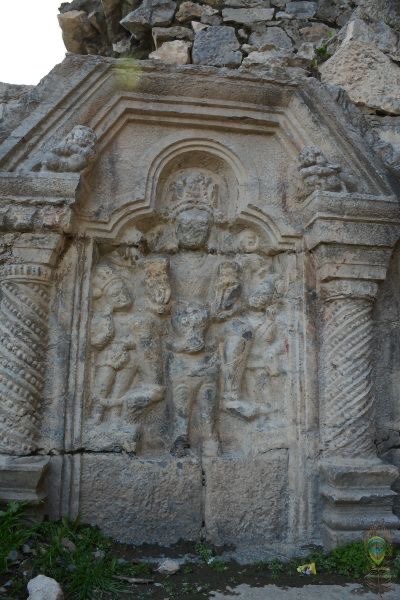
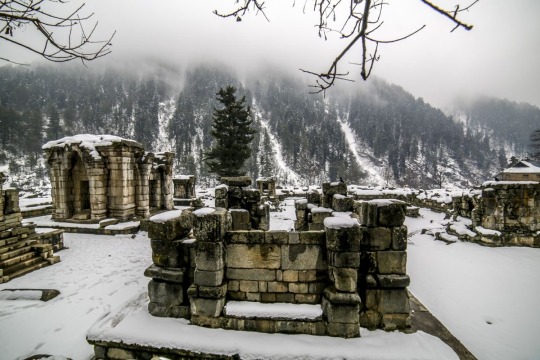
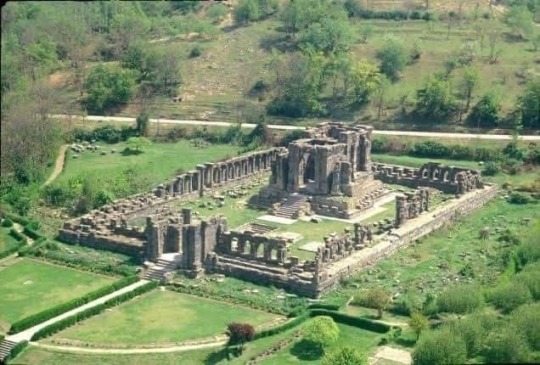
Hindu heritage of Kashmir ⬆️
113 notes
·
View notes
Text
I had a herbal juice when I went to jogging this morning, one of the ingredients was giloy. Giloy is used as a herbal medicine for times immemorial, so I decided to look up if it has any mentions in any of the Ayurvedic Texts.
And it does! Giloy finds its mentions in the book BhavaPrakasha, a textbook originally in Sanskrit (duh) that contained tens of thousands more slokhs (verses) than it does today - a large chunk of Ayurvedic knowledge is now lost! Presently, the book has 108 (or 109) chapters depending on the edition.
This text is considered so important, so much so it's called the nucleus of Ayurved!
Anyway, here are the verses and translation -

Another thing that was amusing to me was how a medical textbook was written in verses, like in a poem format rather than sentences. Too hard to find such things nowadays!
-> Just so we are clear on a few things, according to ayurved the physical human body is composed of three fundamental categories called Doshas, Dhatus and Malas. The Doshas are three in number, the Dhatus are seven, and the Malas are three. The three Doshas (Tridoshas) are Vata, Pitta and Kapha. These doshas are derived from the five elements of nature and its related properties, wherein Vata is composed of space & air, Kapha of fire & water and Pitta of earth & water. It's said that physical, mental ailments is caused due to imbalance in these doshas. When they say, Giloy has tridosh balancing property - theyre talking about this.
Giloy is a go to recommendation during dengue.
35 notes
·
View notes
Text
25th march.
Bangladeshi Hindu genocide remembrance day
— This is for the genocide deniers.
That’s all I’ve got to say. The video speaks for itself.
Om shanti 🕊️
90 notes
·
View notes
Text
Happy Holika Dahan Guys!

May this agni purify us and drive away all the bad influences from our lives.
75 notes
·
View notes
Photo
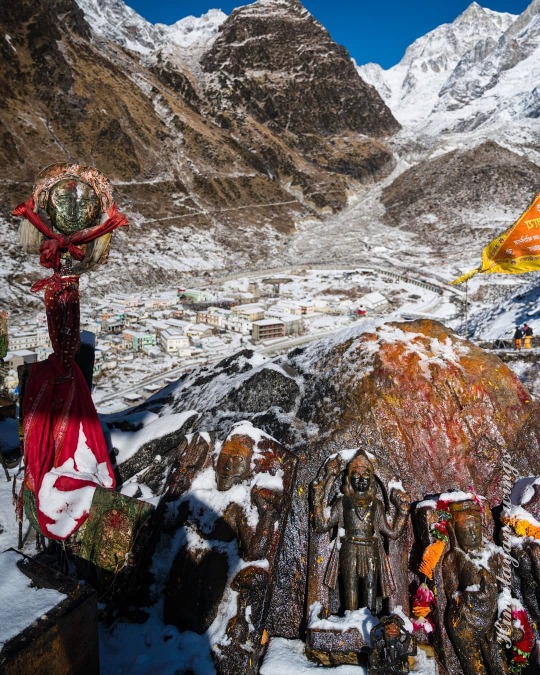
Bhairav Mandir, Kedarnath, Uttarakhand
himalayan_wings wrote :
धर्मध्वजं शङ्कररूपमेकं शरण्यमित्थं भुवनेषु सिद्धम्।
द्विजेन्द्र पूज्यं विमलं त्रिनेत्रं श्री भैरवं तं शरणं प्रपद्ये।।
Bhukunt/bhukund bhairava of kedar valley is a highly revered deity present in kedarnath dham. He is the high warden, guardian and the protector of the kedarkanth temple.
In the local folklore he is believed to be the first rawal (head priest) of the kedarnath temple and got the highest rank by performing extreme devotion to the Lord Shiva.
Bhukunt bhairav has a special place in the temple opening and closing ceremony as he shifts to the main temple before kapat(holi doors of temple) gets closed and goes to his place when temple gets open for everyone. Kedarnath yatra gets complete and fruitful once you visit bhukund bhairava after having darshan to the kedarkanth shrine…
(via Instagram: himalayan_wings)
51 notes
·
View notes
Text

Devprayag, where the Alakananda and Bhagirathi rivers join to form the Ganga.
24 notes
·
View notes
Photo

Badrinath Temple, Uttarakhand, India
Aakarsh Gupta wrote :
The legend of Badrinath. Shot on @oneplus_india …
(via Instagram: Aakarsh Gupta)
63 notes
·
View notes
Text
Let's talk about the idolized Aurangzeb. What he did and why is he considered great?

We will be focusing on the destruction of temples and hindu genocide done by him to debunk claims deny that this.
By the order of Aurangzeb (1645 AD) according to Mirãt-i-Ahmadî, Temple of Chintaman situated close to Sarashpur (Gujarat) and built by Sitaldas jeweller was converted into a mosque named Quwwat-ul-lslam (might of Islam) (1645 AD.) A cow was slaughtered to 'solemnize' the 'ceremony'.
Slaughtering a cow was a heinous choice, cow being one of the holiest animal in Hinduism. As well as, Hinduism prohibits animal slaughter, to do it right where their place of worship used to be where now stands a Mosque was simply to mock and destroy the souls of the indigenous population. The Pandits and Cows were always their main targets.
This was done before he even became the king, he was just a prince at this point.
When he became the king he sent Mir Jumla on an expedition to Cooch Bihar. Mir Jumla demolished ALL temples in that city and erected mosques in their stead. The general himself wielded a battle-axe to break the image of Narayana.
Mirãt-i-Ahmadî continues, In 1666 AD, he ordered the faujdar of Mathura to remove a stone railing which had been presented by Dara Shukoh to the temples of Keshav Rai. He explained: “In the Muslim faith it is a sin even to look at a temple and this Dara had restored a railing in a temple!”
You can still argue that Islamic Colonization simply had a political motif and not a religious one, if that would have been the case, none of the indigenous people would have been harmed, none of them would have been forcefully converted, their heritage would not have been destroyed right in front of their eyes, their schools and texts would have been burned. This is downright evil and was done in the name of Allah by all the Mughal tyrants.
“The richly jewelled idols taken from the infidel temples were transferred to Agra and placed beneath the steps leading to the Nawab Begum Sahib's (Jahanara's) mosque in order that they might be “pressed under foot by the true believers”. Mathura changed its name into Islamabad and was thus called in all official documents.”
In the same year, Sita Ram ji temple at Soron was destroyed as also the shrine of Devi Patan at Gonda. News came from Malwa also that the local governor had sent 400 troopers to destroy all temples around Ujjain.
According to Muraqat-i-Abul Hasan, civil officers, agents of jagirdars, karoris and amlas from Cuttack in Orissa to Medinipur in Bengal were instructed as follows:
“Every idol house built during the last 10 or 12 years' should be demolished without delay. Also, do not allow the crushed Hindus and despicable infidels to repair their old temples. Reports of the destruction of temples should be sent to the court under the seal of the qazis and attested by pious Shaikhs.”
(1672 AD) several thousand Satnamis were slaughtered near Narnaul in Mewat for which act of 'heroism' Radandaz Khan was tided Shuja'at Khan with the mansab of 3000 and 2000 horse.
(1675 AD) Guru Tegh Bahadur was tortured to death for his resistance against the forcible conversion of the Hindus of Kashmir. The destruction of gurudwaras thereafter is a well-known story which our secularists have succeeded in suppressing because the Akali brand Sikhs have been forging ties of friendship with Islam as against their parent faith, Hindu Dharma.
Mirãt-i-Ahmadî goes ahead: “On 6th January 1680 A.D. Prince Mohammad Azam and Khan Jahan Bahadur obtained permission to visit Udaipur. Ruhullah Khan and Yakkattaz Khan also proceeded thither to effect the destruction of the temples of the idolators. These edifices situated in the vicinity of the Rana's palace were among the wonders of the age, and had been erected by the infidels to the ruin of their souls and the loss of their wealth”. Pioneers destroyed the images. On 24th January the king visited the tank of Udayasagar.
His Majesty ordered all three of the Hindu temples to be levelled with the ground. On 29th January Hasan AN Khan made his appearance' and stated that “172 temples in the neighbouring districts had been destroyed.” His Majesty proceeded to Chitor on 22nd February.
Temples to the number of 63 were destroyed. Abu Tarab who had been commissioned to effect the destruction of idol temples of Amber, reported in person on 10th August that 66 temples had been levelled to the ground.’ The temple of Someshwar in western Mewar was also destroyed at a later date in the same year. It may be mentioned that unlike Jodhpur and Udaipur, Amber was the capital of a state loyal to the Mughal emperor.
Khafi Khan records in his Muntakhab-ul-Lubab: ‘On the capture of Golconda, the Emperor appointed Abdur Rahim Khan as censor of the city of Haiderabad with orders to put down infidel practices and innovations, and destroy the temples and build mosques on the sites.’ That was in 1687 AD. In 1690 AD, he ordered destruction of temples at Ellora, Trimbakeshwar, Narasinghpur, and Pandharpur.
Aurangzeb also destroyed, Kashi Vishwanath Temple in Kashi, Uttar Pradesh - which considered as the most scared hindu temple and land.
In 1698 AD, the story was repeated at Bijapur. According to Mirat-i-AhmadT: 'Hamidud-din Khan Bahadur who had been deputed to destroy the temples of Bijapur and build mosques there, returned to court after carrying out the order and was praised by the Emperor.' As late as 1705 AD, two years before he died, 'the emperor, summoning Muhammad Khalil and Khidmat Rai, the darogha of hatchet-men' ordered them to demolish the temple of Pandharpur, and to take the butchers of the camp there and slaughter cows in the temple.' Cow-slaughter at a temple site was a safeguard against Hindus rebuilding it on the same spot.
The saddest part is, all of this information, the bloodiest part of Indian History is never shown to the people, they grow up learning, Mughals were great emperors that built great things. When none of that holds any ounce of truth. It should be said without any censorship, these tyrants destroyed the culture, tradition and religions of India.
With all this information, if you're still defending these tyrants, if you still "want them around", if you still insist "it wasn't that bad", you absolutely do not care about "human rights", every activism you take part in is just performative. And I do not respect you or your opinion on any social issue.
78 notes
·
View notes
Text

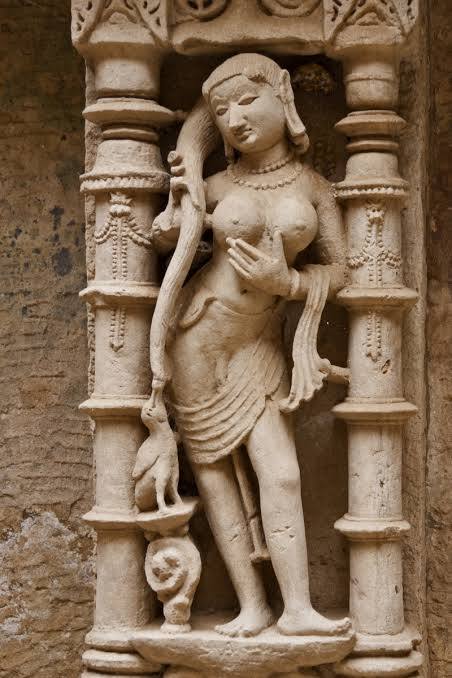
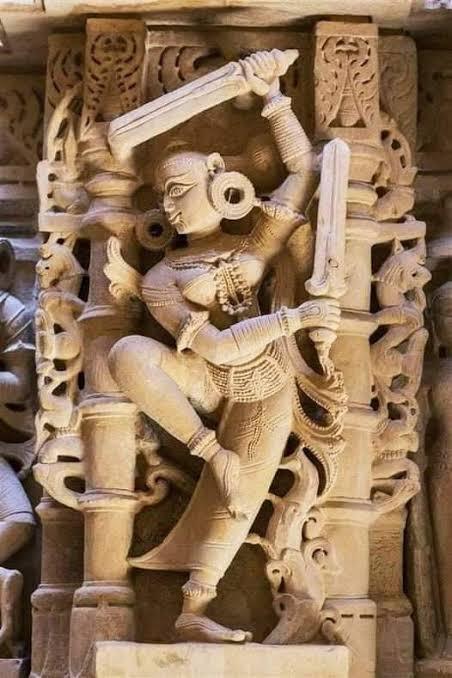







Women in Sculptures | various Hindu and Jain Temples.
212 notes
·
View notes
Text
Angkor Wat, Cambodia
Largest religious monuments, built by khmer kings more than a thousand years ago. It is a complex of both Hindu and Buddhist past.


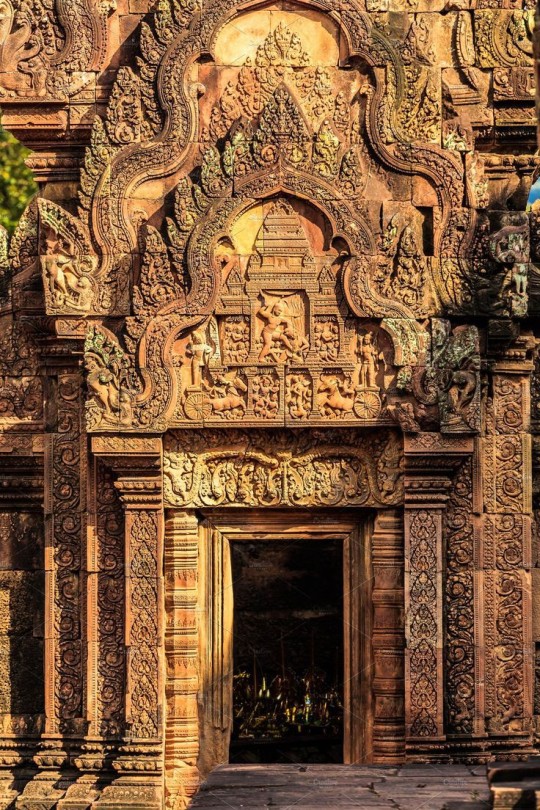
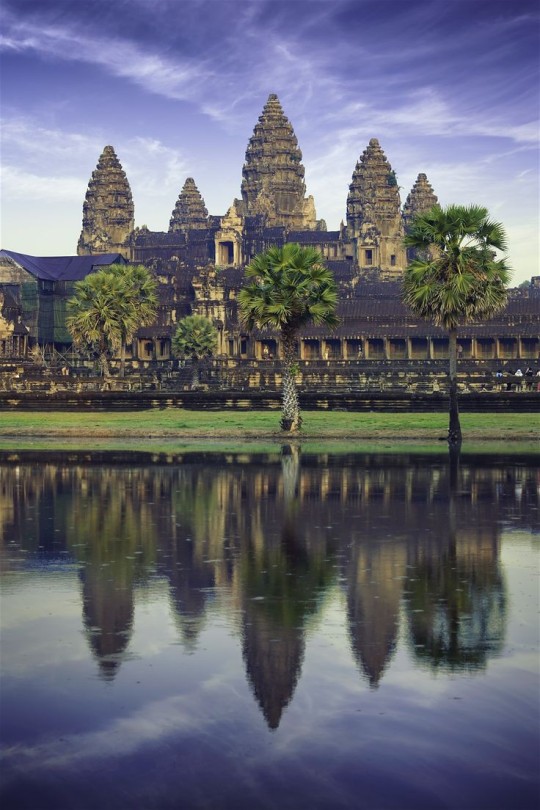

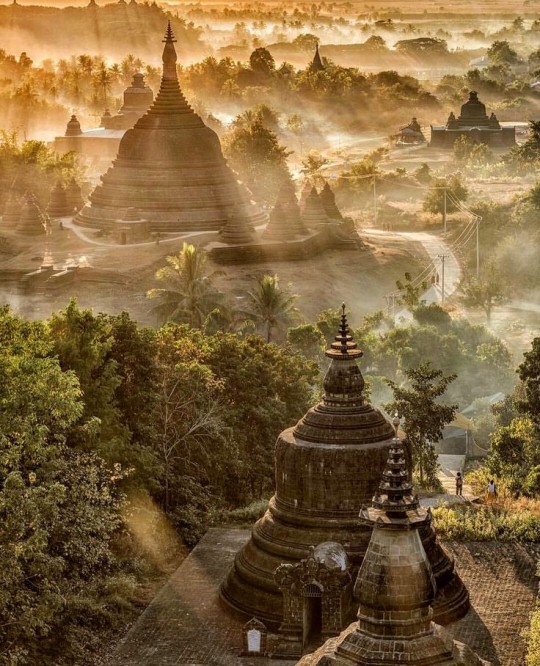




58 notes
·
View notes
Text
This is so embarrassing.
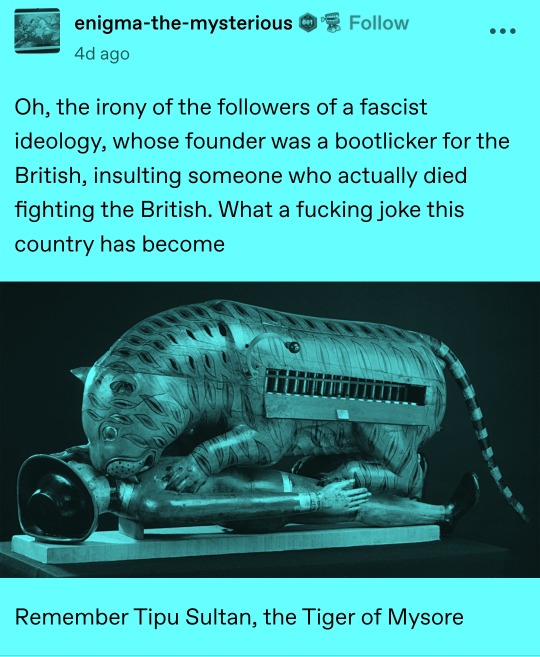
Let me help you all to remember Tipu Sultan as he was! Don't hate him, you fascist! Please remember and honor the great Tiger of Mysore.
It's beyond foolishness to think Tipu Sultan fought British because he loved Bharat. He wanted to establish Islamic rule in the countiy; to achieve that he had to first defeat the British. For this purpose, Tipu Sultan solicited the assistance of Muslim countries like Persia, Afghanistan and Turkey.
Even the Hindu names of places, the Sultan could not tolerate. Therefore, Mangalapuri (Mangalore) was changed to Jalalabad, Cannanore (Kanwapuram) to Kusanabad, Bepur (Vaippura) to Sultanpatanam or Faruqui, Mysore to Nazarabad, Dharwar to Quarshed-Sawad, Gooty to Faiz-Hissar, Ratnagiri to Mustafabad, Dindigul to Khaliqabad, and Calicut (Kozhikode) to Islamabad. It was after the death of Tipu Sultan that the local people reverted to old names.
There are numerous historical records that detail the atrocities of Tipu Sultan on Hindus and Christians.
Let's list only a few.
Elankulam Kunjan Pillai has recorded the situation in Malabar as follows:
“Kozhikode was then a centre of Brahmins. There were around 7000 Namboodiri houses of which more than 2000 houses were destroyed by Tipu Sultan in Kozhikode alone. Sultan did not spare even children and women. Menfolk escaped to forests and neighbouring principalities. Mappilas increased many fold (due to forcible conversion). During the military regime of Tipu Sultan, Hindus were forcibly circumcised and converted to Muhammadan faith. As a result the number of Nairs and Brahmins declined substantially.”
Atrocities committed in Malabar during the days of Tipu Sultan’s cruel military regime have been described in great detail in the famous works of many reputed authors— Travancore State Manual of T.K. Velu Pillai and Kerala Sahitya Charitam of Ulloor Parameshwara Iyer.
After the capture of Mangalore, thousands of Christians were also forcibly sent to Sreerangapatanam where all of them were circumcised and converted to Islam. Tipu Sultan’s justification was that during the Portuguese domination, prior to the arrival of the British, many Muslims had been converted to Christianity by their Missionaries. He proudly proclaimed his action as a sort of punishment for the conversion of many Muslims by the Portuguese.
Then he marched upto Kumbla on the northern borders of Kerala, forcibly converting to Islam every Hindu on the way. This time, his argument (repeated by the Muslim and secularist historians of today) was that if all belonged to one religion—Muhammadanism—there would be unity and consequently it would be easy to defeat the British!
In Malabar, the main target of Tipu Sultan’s atrocities were Hindus and Hindu temples. According to Lewis B. Boury, “the atrocities committed by Tipu Sultan against Hindus in Malabar were worse and more barbarous than those committed against the Hindus in Hindustan by the notorious Mahmud of Ghazni, Alauddin Khalji, and Nadir Shah.”
According to the Malabar Manual of William Logan who was the District Collector for some time, Thrichambaram and Thalipparampu temples in Chirackal Taluqa, Thiruvangatu Temple (Brass Pagoda) in Tellicherry, and Ponmeri Temple near Badakara were all destroyed by Tipu Sultan.
The Malabar Manual mention that the Maniyoor mosque was once a Hindu temple. The local belief is that it was converted to a mosque during the days of Tipu Sultan.
Vatakkankoor Raja Raja Varma in his famous literary work, History of Sanskrit Literature in Kerala , has written the following about the loss and destruction faced by the Hindu temples in Kerala during the military regime (Padayottam) of Tipu Sultan:
“There was no limit as to the loss the Hindu temples suffered due to the military operations of Tipu Sultan. Burning down the temples, destruction of the idols installed therein and also cutting the heads of cattle over the temple deities were the cruel entertainments of Tipu Sultan and his equally cruel army. It was heartrending even to imagine the destruction caused by Tipu Sultan in the famous ancient temples of Thalipparampu and Thrichambaram. The devastation caused by this new Ravana’s barbarous activities have not yet been fully rectified.”
As per the provisions of the Treaty of Mangalore of 1784, the British had allowed Tipu Sultan to have his suzerainty over Malabar. “In consequence, the Hindus of Malabar had to suffer the most severe enormities the world had ever known in history,” observes K.V. Krishna Iyer, in his famous book, “When the second-in-line of Zamorins, Eralppad, refused to cooperate with Tipu Sultan in his military operations against Travancore because of Tipu’s crude methods of forcible circumcision and conversion of Hindus to Islam, the enraged Tipu Sultan took a solemn oath to circumcise and convert the Zamorin and his chieftains and Hindu soldiers to Islamic faith.”
L.B. Bouiy writes : Tipu Sultan sought a marriage alliance with the matriarchal Muslim family of Arackal Bibi in Cannanore. Kozhikode was then a centre of Brahmins and had over 7000 Brahmin families living there. Over 2000 Brahmin families perished as a result of Tipu Sultan’s Islamic cruelties. He did not spare even women and children. Most of the men escaped to forests and foreign lands.
Elamkulam Kunjan Pillai wrote in the Mathrubhoomi Weekly of December 25, 1955:
“Muhammadans greatly increased in number. Hindus were forcibly circumcised in thousands. As a result of Tipu’s atrocities, strength of Nairs and Chamars (Scheduled Castes) significantly diminished in number. Namboodiris also substantially decreased in number.”
The German missionary Guntest has recorded:
“Accompanied by an army of 60,000, Tipu Sultan came to Kozhikode in 1788 and razed it to the ground. It is not possible even to describe the brutalities committed by that Islamic barbarian from Mysore.” C.A. Parkhurst also noted that “Almost the entire Kozhikode was razed to the ground.”
Kozhikode was made a graveyard by Tipu Sultan, the symbol of communal harmony.
Thali, Thiruvannur, Varackal, Puthur, Govindapuram, Thalikkunnu and other important temples in the town of Kozhikode as well as those nearby were completely destroyed as a result of Tipu’s military operations. According to available evidences, fearing the wrath of Tipu Sultan, the sacred idol of the Guruvayoor Temple was removed to the Ambalapuzha Sri Krishna Temple in Travancore State. It was only after the end of Tipu’s military regime, that the idol was ceremoniously reinstated in the Guruvayoor Temple itself.
Damages caused to the nearby temples at Parampathali, Panmayanadu and Vengidangu are visible even today. The deplorable state of the architecture of the sanctum sanctorum of Parampathali Temple destroyed during the military operations of Tipu Sultan is really heart-rending. The atrocities committed in Kozhikode during the nightmarish days of the military occupation are vividly described in the works of Fra Bartolomaeo who had travelled through Kerala at that time. How cruelly Tipu Sultan, ably assisted by the French Commander M. Lally, had treated the Hindu and Christian population can be clearly understood from his writings.
Govinda Pillai in the book,History of Literature writes.
“During Malayalam Era 965 corresponding to 1789-90, Tipu Sultan crossed over to Malabar with an army of uncivilised barbarians. With a sort of fanatical love for Islamic faith, he destroyed many Hindu temples and Christian churches which were the custodians of precious wealth and religious traditions. Besides, Tipu Sultan abducted hundreds of people and forcibly circumcised and converted them to Islam—an act which was considered by them as more than death.”
A small army of 2000 Nairs of Kadathanadu resisted the invasion of the huge army of Tipu Sultan from a fortress in Kuttipuram for a few weeks. They were reduced to starvation and death. Tipu Sultan entered the fort and offered to spare their lives, provided they accepted conversion to Islam. The unfortunate lot of 2000 Nairs were then forced to eat beef after being converted to Islamic faith, at the end of usual religious ritual of mass circumcision. All the members of one branch of Parappanad Royal Family were forcibly converted to Muhammadan faith except for one or two who escaped from the clutches of Tipu Sultan’s army. Similarly, one Thiruppad belonging to Nilamboor Royal Family was also forcibly abducted and converted to Islam. Thereafter, it was reported that further conversions of Hindus were attempted through those converts. In the end, when the Kolathiri Raja surrendered and paid tribute, Tipu Sultan got him treacherously killed without any specific reason, dragged his dead body tied to the feet of an elephant through the streets, and finally hanged him from a tree-top to show his Islamic contempt for Hindu Rajas.
According to the official report of Col. Fullarton of the British forces stationed in Mangalore, worst type of brutalities on Brahmins were committed by Tipu Sultan in 1783 during his siege of Palghat Fort which was being defended by the Zamorin and his Hindu soldiers.
“Tipu’s soldiers daily exposed the heads of many innocent Brahmins within sight from the fort for Zamorin and his Hindu followers to see. It is asserted that the Zamorin rather than witness such enormities and to avoid further killing of innocent Brahmins, chose to abandon the Palghat Fort” (p. 500).
“In August, 1788, a Raja of the Kshatriya family of Parappanad and also Trichera Thiruppad, a chieftain of Nilamboor, and many other Hindu nobles who had been carried away earlier to Coimbatore by Tipu Sultan, were forcibly circumcised and forced to eat beef. Nairs in desperation, under the circumstances, rose up against their Muslim oppressors under Tipu’s command in South Malabar and the Hindus of Coorg in the North also joined them” (p. 507).
If this was not an Islamic war, what else was it? Do forcible circumcision and feeding of beef form any part of normal wars? The War that Tipu Sultan waged in Kerala, was a cruel Islamic war against the Hindu population, mainly for conversion of Hindus by force. Yet there are degenerates like OP who admire Tipu Sultan as a hero!
The inscription on the sword of Tipu Sultan was:
“My victorious sabre is lightning for the destruction of the unbelievers. Haidar, the Lord of the Faith, is victorious to my advantage. And moreover, he destroyed the wicked race who were unbelievers.”
During the notorious Padayottakkalam from 1783 to 1792, Tipu Sultan had committed a variety of atrocities against the Hindus and Christians in Kerala. Some of them as narrated by the Christian victims are vividly described by the famous traveller and historian, Fra Bartolomaeo, in his well-known book, Voyage to East Indies. Following is the verbatim description of the atrocities by a Christian victim as given in the book:
“First a corps of 30,000 barbarians who butchered everybody on the way, followed by the Field-Gun Unit under the French Commander, M. Lally. Tipu Sultan was riding on an elephant behind which another army of 30,000 soldiers followed. Most of the men and women were hanged in Calicut. First mothers were hanged with children tied to the necks of their mothers. That barbarian Tipu Sultan tied the naked Christians and Hindus to the legs of elephants and made the elephants move about till the bodies of the helpless victims were torn to pieces. Temples and Churches were ordered to be burnt, desecrated and destroyed. Christian and Hindu women were forced to marry Muhammadans and similarly their men were forced to marry Muhammadan women.
Those Christians who refused to be ‘honoured’ with Islam, were ordered to be killed by hanging then and there. The above version of the atrocities was obtained from the sorrowful narration by the victims who escaped from Tipu’s army and reached Varapuzha (near Alwaye) which is the centre of Carmichael Christian Misssion. I myself helped many victims to cross the Varapuzha river by boats” (Cited in Cochin History by K.P. Padmanabha Menon, p. 573).
It may be noted here that Fra Bartolomaeo was in the West Coast around March, 1790. Evidence of Tipu’s atrocities against Christians are also available from the records of churches in Mangalore, Calicut and Varapuzha.
The Mysore Gazetteer says that the ravaging army of Tipu Sultan had destroyed more than 8000 temples in South India. The temples of Malabar and Cochin principalities had to bear the brunt of plunder and destruction. The History of Cochin by K.P. Padmanabha Menon and History of Kerala by A. Sreedhara Menon narrate some of them:
“In the month of Chingam 952, Malayalam Era (corresponding to August, 1786) Tipu’s Army destroyed idols of the famous Perumanam Temple and desecrated all the temples between Trichur and Kamvannur river. Irinjalakuda and Thiruvanchikulam temples were also defiled and damaged by Tipu’s Army.”
Some of the other famous temples looted and desecrated were as follows: Triprangot, Thrichembaram, Thirunavaya, Thiruvannoor, Calicut Thali, Hemambika Temple, the Jain Temple in Palghat, Mammiyur, Parambatali, Venkitangu, Pemmayanadu, Tiruvanjikulam, Terumanam, Vedakhumnnathan Temple of Trichur, Belur Siva Temple, Shri Veliyanattukava, Varakkal, Puthu, Govindapuram, Keraladhiswara, Trikkandiyur, Sukapuram, Maranehei Temple of Aaalvancheiri Tambrakkal, Vengara Temple of Aranadu, Tikulam, Ramanathakra, Azhinjalam Indiannur, Mannur Narayan Kanniar and Vadukunda Siva Temple of Madai.The Trikkavu Temple of Ponnani was converted into Military Garrison. The Christian Pilgrimage centre of Palayur Church and Varapuzha Church and Mission buildings were among the several churches destroyed by the ravaging army of Tipu.
In the case of Triprayar Temple, the main deity was shifted temporarily to Gnanappilly Mana situated in a remote village, and in the case of Guruvayoor Temple, the idol was shifted to Ambalapuzha Sri Krishna Temple in Travancore State before the barbarian army of Tipu Sultan reached there.
According to personal diary notes of Tipu Sultan, the Chirackal Raja offered to pay over Rs. 4 lakh in gold and silver to save the destruction of the local Hindu temples by Tipu’s army. But, true to his character, Tipu replied that “even if the entire world is offered to me, I will not desist from destroying Hindu temples”
I do not have even try to “defame” that barbarian there are some letters written by him -

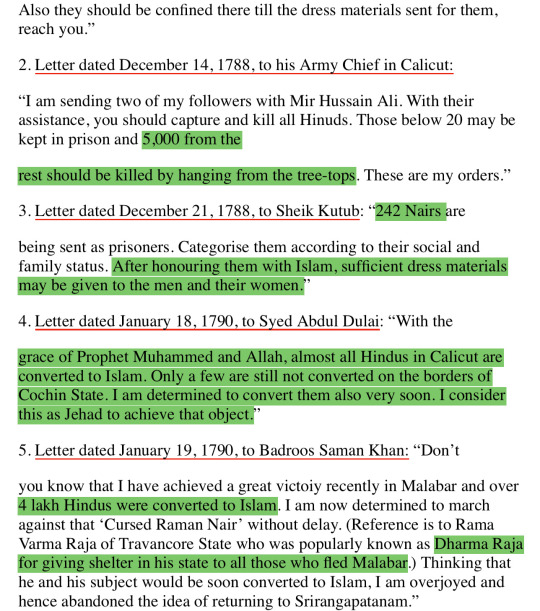
This is barely scratching the surface! Just listen to OP, stop being a hindutva bigot and start honouring Tipu Sultan <3
71 notes
·
View notes
Text
The Martand Sun Temple, Kashmir
Dedicated to Lord Surya, Hinduism's principal sun god; Surya Dev is also recognized through his Sanskrit name Martand.
It was made by King Lalitaditya in around 5th Century A.D. and it was destructed by Muslim ruler Sikander Butshikan, under the advice of Sufi preacher Mir Muhammad Hamadani. It is believed that the was so strongly built that it took many days for its destruction.
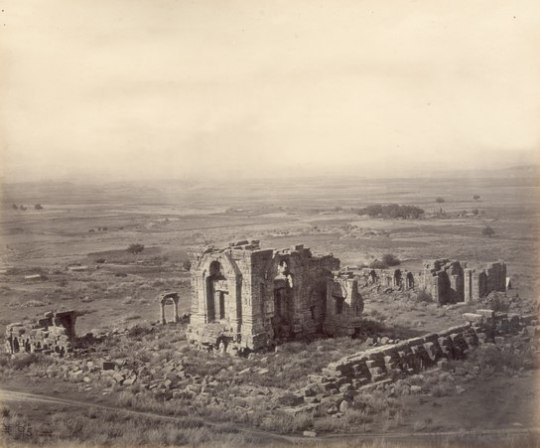
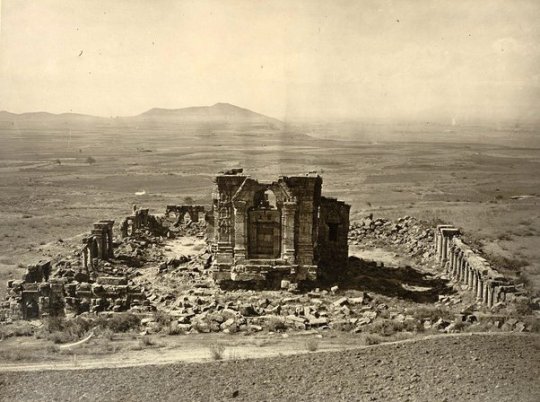


The temple has a colonnaded courtyard, with its primary shrine in its center and surrounded by 84 smaller shrines, stretching to be 220 feet long and 142 feet broad total and incorporating a smaller temple that was previously built.
The primary shrine is located in a centralised structure (the temple proper) that is thought to have had a pyramidal top - a common feature of the temples in Kashmir. Various wall carvings in the antechamber of the temple proper depict other gods, such as Vishnu Ji and river goddesses, such as Mata Ganga and Mata Yamuna, in addition to the sun-god Surya Dev.
How it must’ve looked ->

#sun temple#mughal invasion#hindublr#hinduism#sanatan dharma#bharat#ancient india#india#kashmir#hindu temples#hindu culture#hindu architecture#indian architecture#lalitaditya#sufi#islamic terrorism#kashmiri hindus
19 notes
·
View notes